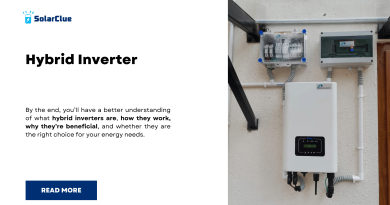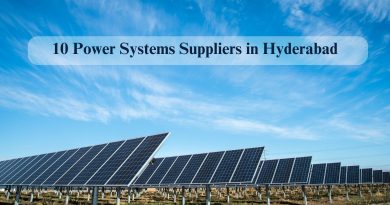How to know if I am using grid electricity or solar power?
Electricity is an essential part of our daily lives, powering our homes, appliances, and electronics. With increasing concerns about climate change and the need for sustainable energy sources, many people are turning to solar power as an alternative to traditional grid electricity. But how can you know if the electricity you are using is coming from the grid or solar power? In this blog post, we will explore different methods and signs to help you determine the source of your electricity.
Table of Contents
Understanding Your Electricity Supply
Before diving into the various ways to identify if you are using grid electricity or solar power, it is important to understand the basics of how electricity is generated and distributed. Most households are connected to the grid, which is a system that delivers electricity from power plants to consumers. On the other hand, solar power involves harnessing energy from the sun through the use of solar panels and converting it into electricity using solar inverters.
1. Check Your Utility Bill
One of the easiest ways to determine your electricity source is by examining your utility bill. Most utility companies in solar-powered regions provide detailed information about the source of the electricity they are supplying. Look for terms like “renewable energy credits” or “net metering” on your bill, as they indicate that some or all of your electricity is coming from solar power. If your bill does not mention these terms, it is likely that you are using grid electricity.
2. Observe Your Home’s Electricity Generation
If you have solar panels installed on your home or property, you have a clear indicator that you are using solar power. Keep an eye on the solar panels and monitor the energy they generate. You can often find information about the energy production on the solar panel system’s monitoring device or app. During daylight hours, if your solar panels are producing more electricity than you are consuming, it is a strong indication that you are using solar power. Conversely, if your panels are not generating any electricity or are not meeting your energy demands, you are likely relying on grid electricity.
3. Look for a Separate Solar Power System
In some cases, households may have a separate solar power system installed that is completely independent of the electrical grid. Such systems typically use batteries to store excess solar energy for use during non-sunny hours. If you have such a system, you can be sure that you are using solar power when your battery level is being charged during daylight and discharged during the night or cloudy periods. Additionally, these systems may have a separate power meter for measuring solar energy consumption.
4. Contact Your Electricity Provider
If you are still unsure about the source of your electricity, you can simply contact your electricity provider. They should be able to provide you with detailed information about your electricity source, including whether it comes from the grid or solar power. Make sure to have your account number or customer information ready before reaching out to them.
Conclusion
Determining whether you are using grid electricity or solar power is essential for those who are conscious about their environmental impact or seeking to make energy-efficient choices. By checking your utility bill, monitoring your home’s electricity generation, looking for separate solar power systems, or contacting your electricity provider, you can determine the source of your electricity with ease. Knowing the origin of your electricity allows you to make informed decisions about your energy consumption and contribute to a greener and more sustainable future.
Empower yourself with energy awareness! Discover your power source with SolarClue®. Take control of your energy choices.
Frequently Asked Questions
Check your electricity meter; if it’s moving, you’re likely using grid power. If not, you may be running on solar.
Some systems have indicators on inverters or meters, displaying when solar power is actively being used.
Yes, electricity bills often differentiate between energy sourced from the grid and energy generated by your solar system.
Yes, some apps allow you to monitor and track your energy consumption, helping identify the source of your power.
It depends on the system setup. Some homes may automatically switch to grid power if solar production is insufficient.
Yes, installing a separate meter for solar power usage is possible and can provide clear insights into your energy consumption.
Smart devices can monitor energy usage and provide real-time data, aiding in the identification of power sources.
Yes, observing solar panels during daylight hours can give an indication of their activity through sunlight absorption.
Consult with a professional to assess your energy system and provide clarity on your power source.
Absolutely! Knowing your power source empowers you to make informed decisions about energy usage and sustainability.




My bill seems high for property that has solar panels. I do not show the usage of my solar panels on my bill. I just want to make sure I’m using solar energy as well and not just the grid. Would that show on my bill.
Your bill may not show solar usage separately. Check your net metering data, use your solar monitoring app to track production, and ensure your system is functioning properly. If unsure, contact your utility or installer for clarification.